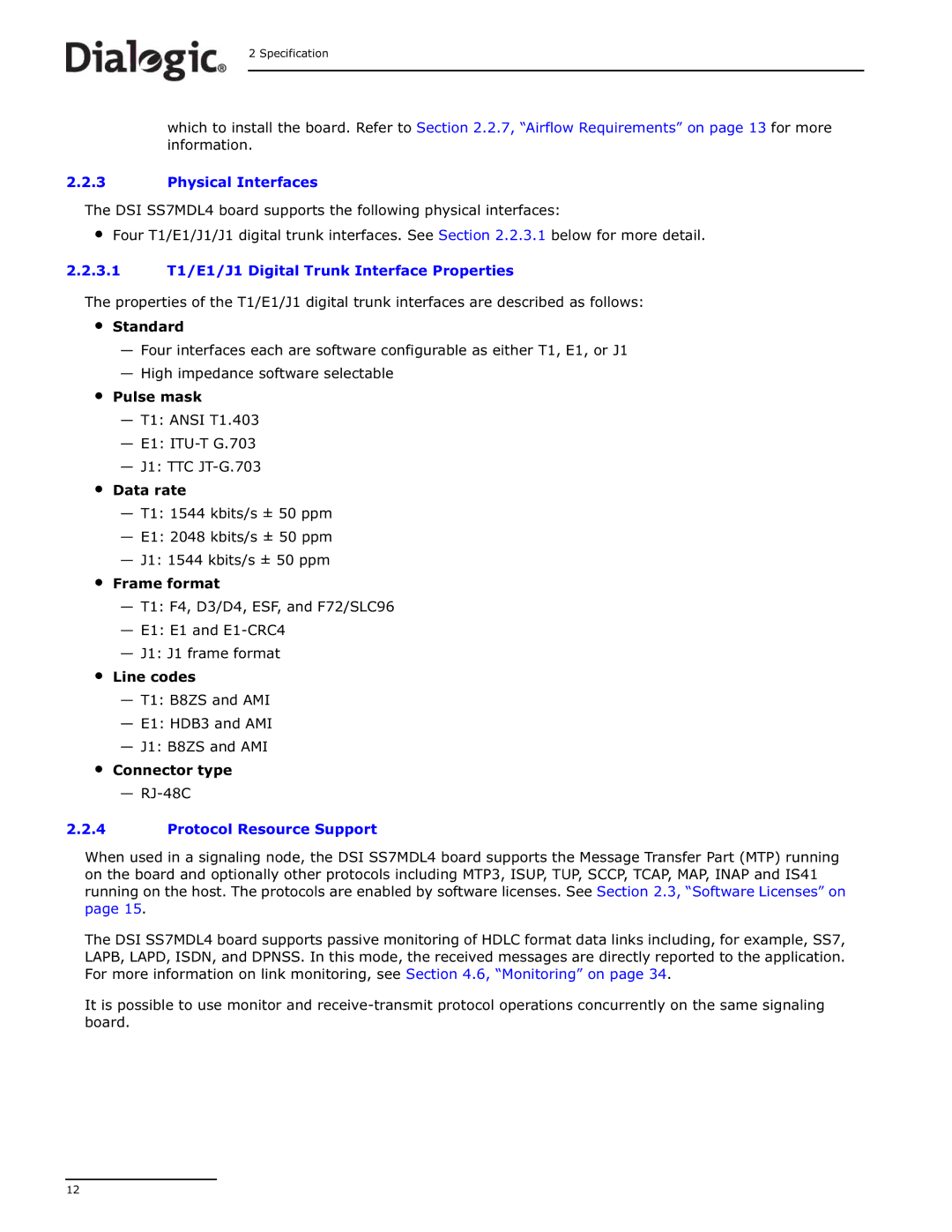
2 Specification
which to install the board. Refer to Section 2.2.7, “Airflow Requirements” on page 13 for more information.
2.2.3Physical Interfaces
The DSI SS7MDL4 board supports the following physical interfaces:
•Four T1/E1/J1/J1 digital trunk interfaces. See Section 2.2.3.1 below for more detail.
2.2.3.1T1/E1/J1 Digital Trunk Interface Properties
The properties of the T1/E1/J1 digital trunk interfaces are described as follows:
•
•
•
•
•
•
Standard
—Four interfaces each are software configurable as either T1, E1, or J1
—High impedance software selectable
Pulse mask
—T1: ANSI T1.403
—E1:
—J1: TTC
Data rate
—T1: 1544 kbits/s ± 50 ppm
—E1: 2048 kbits/s ± 50 ppm
—J1: 1544 kbits/s ± 50 ppm
Frame format
—T1: F4, D3/D4, ESF, and F72/SLC96
—E1: E1 and
—J1: J1 frame format
Line codes
—T1: B8ZS and AMI
—E1: HDB3 and AMI
—J1: B8ZS and AMI
Connector type
—
2.2.4Protocol Resource Support
When used in a signaling node, the DSI SS7MDL4 board supports the Message Transfer Part (MTP) running on the board and optionally other protocols including MTP3, ISUP, TUP, SCCP, TCAP, MAP, INAP and IS41 running on the host. The protocols are enabled by software licenses. See Section 2.3, “Software Licenses” on page 15.
The DSI SS7MDL4 board supports passive monitoring of HDLC format data links including, for example, SS7, LAPB, LAPD, ISDN, and DPNSS. In this mode, the received messages are directly reported to the application. For more information on link monitoring, see Section 4.6, “Monitoring” on page 34.
It is possible to use monitor and
12
